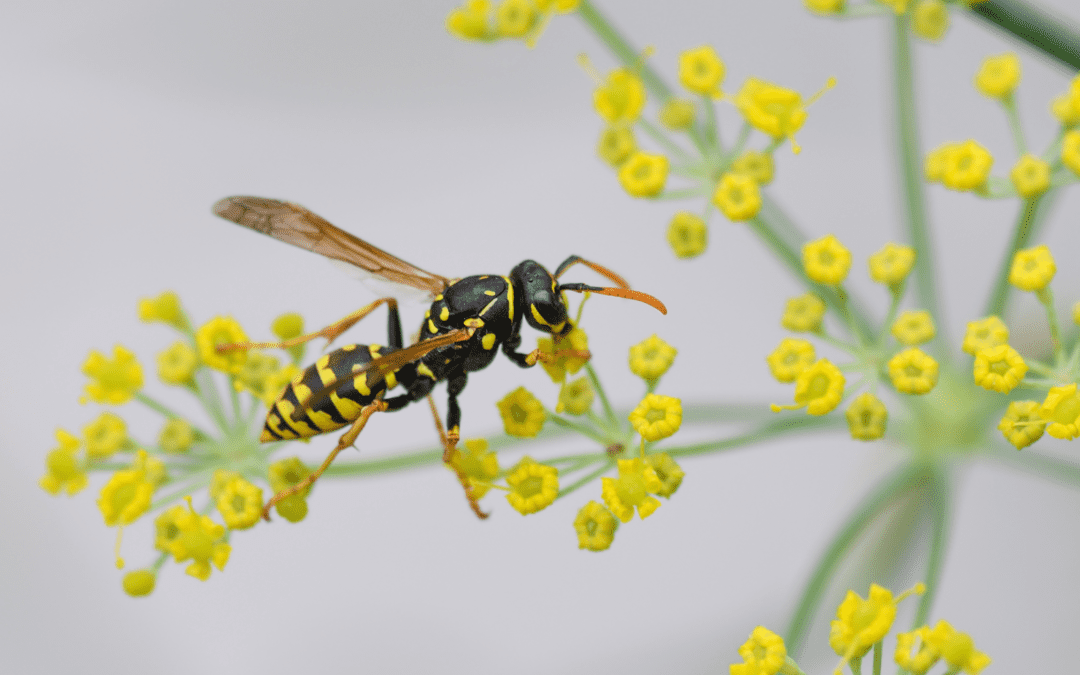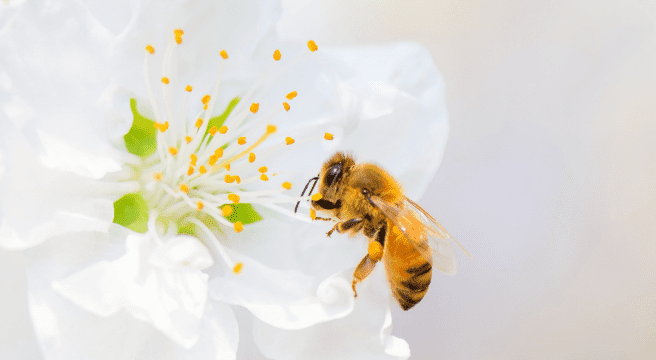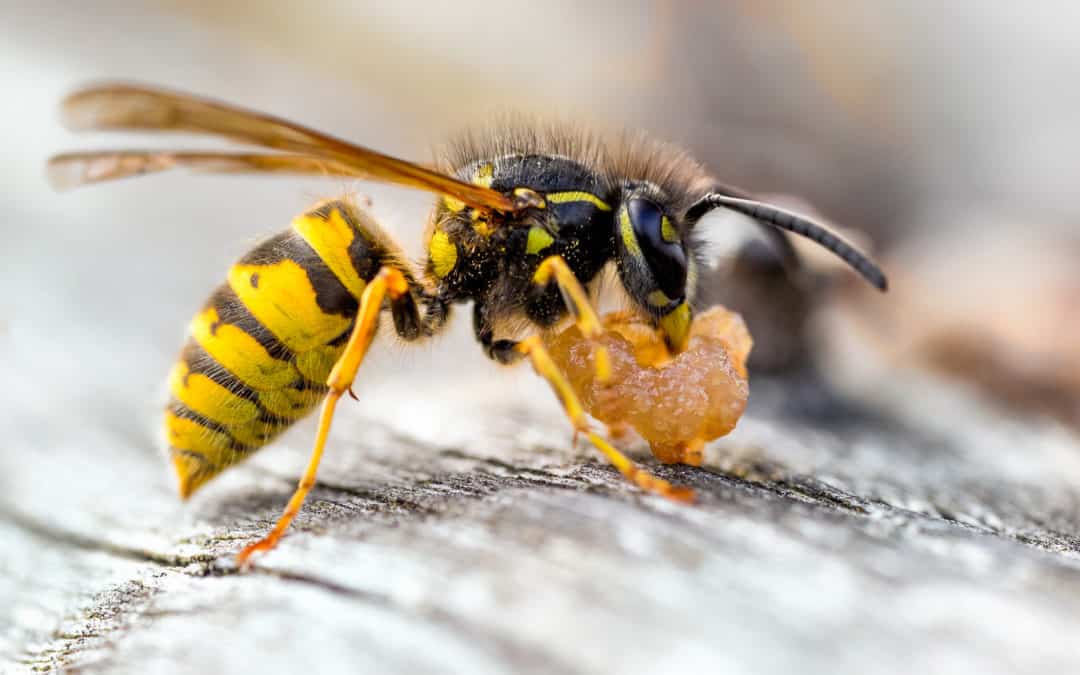READY TO GET STARTED?
REQUEST A FREE ESTIMATE
Fill out the form below or call (888) 466-7849 for a free, no-obligation estimate.

Stinging insects, such as yellowjackets, wasps, and hornets, send more than 500,000 people to the emergency room each year. With the weather warming up, these pests are looking for a food source. While you’re enjoying your backyard barbecues and relaxing by the pool, remember these tips to help keep stinging pests from ruining your outdoor fun.
These slim-bodied insects have six legs and two wings. They are busy at work scavenging for food during the summer months. They will typically build their nests in branches, porch ceilings, and attic rafters. They are highly attracted to picnics and backyard barbecues, increasing your chance of being stung.
These social insects are found anywhere with human activity. They feed on sweets and proteins, often invading outdoor events. They have a non-fuzzy black and yellow striped body and measure less than an inch long. Sometimes they build their nests in high places, like the side of a building. Most of the time, yellow jackets’ nests are built in or near the ground, including shrubs, timber, and logs.
These insects typically prefer a forested environment and are known to build nests in hollow trees or walls of houses and attics. They are attracted to light and will try to fly into your windows at night if a light is on. They are generally non-aggressive near their nests, but if they feel threatened, they will potentially sting.
If the stinging insect problem is bigger than you can handle, then calling your local pest control company might be the next step in prevention.

Spring is around the corner, and that means our favorite stinging insects are making a return! Some of these stinging pests are very beneficial for pollinating flowers, but some are not so nice for your home. Check out our list of popular stinging insects in the southeast and what you should know about them!
Bumblebees
Bumblebees are relatively harmless and can be greatly beneficial for pollinating flowers. These insects can be identified by their black and yellow markings and an overall fuzzy appearance. They build their nests out of pollen buildup and will usually build them in the ground or a dense grass clump. If they feel threatened, they can become aggressive and result in stinging, so if the nest is found near a structure, then control may be necessary.
Carpenter Bees
Carpenter bees are often confused with bumblebees, but the top of their abdomen is largely bare and shiny. They are a serious threat to your property, as they burrow deep into wood to make galleries for nurturing their young. Male carpenter bees are territorial, and you may find them hovering in front of your face aggressively, but they have no stinger and these actions are merely for show. Female carpenter bees have a powerful sting which is rarely used.
Honeybees
Honeybees are less than an inch in size and are orange-ish brown or black in color. They are considered social insects and live as colonies in hives, where they can reach sizes up to 80,000 inhabitants. Three types of honeybees live in a beehive: worker, drone, and queen. Each has its important roles and performs specific duties within a bee colony. Honeybees are very beneficial and pollinate 85 percent of food crops intended for human consumption. They are critical to our environment and provide us with honey, which has many positive health benefits.
Yellow Jackets
Yellow jackets are less than an inch in size and are yellow and black in color. These pests reside in nests constructed of paper cartons, which can grow to be the size of a baseball. One nest can contain multiple rounded paper combs which are attached to one another and covered in many layers. Depending on the species, the nest can be near the ground, such as plant roots, logs, or timber; or aerial and attached to shrubs, houses, garages, or sheds. Yellow jackets are slow to sting unless they feel threatened. They are considered beneficial because they control many pest insect species, like flies and aphids.
Remember – it is not recommended to attempt to remove a stinging insect nest on your own and doing so can be extremely dangerous. Instead, work with a local pest control company to access your property and the nest, identify the type of stinging insect (like wasps or other dangerous stingers) and determine the best way to eliminate the threat to your family.

An encounter with a stinging pest can always be alarming, as they are known to have a painful sting. Since stinging pests are most active during the spring and summer, it’s important to know the most commons ones to look out for and how you can protect yourself and your family.
Social in nature, the yellowjacket can live in nests or colonies containing anywhere from 1,000 to 4,000 workers. Yellowjackets tend to build their nests on trees, buildings, and in the ground. Unlike bees, these insects have smooth stingers where they can sting several times if they start to feel threatened, which can be severely painful. These insects are highly attracted to sweet foods and proteins. If you plan on having a picnic or BBQ outside, make sure to keep your food covered tightly to eliminate the chance of attracting them.
Another popular stinging insect you should be aware of this spring and summer is the hornet. Hornets can sometimes be a benefit to homeowners as they can help control common household pests; although, they can quickly become a nuisance as they will often build nests throughout your property, such as in hollow trees, in the walls of houses and attics, and even in abandoned beehives. Like yellowjackets, these insects have smooth stingers. If stung by a hornet, the stinger can get lodged in the skin at the site of the sting. Hornets will eat tree sap, fruit, and honeydew. To prevent an encounter with these insects, keep both your food and garbage sealed in containers.
Known to build construction paper-like nests on branches, porch ceilings, eaves, and attic rafters, wasps can easily infest your entire property. These pests live in small colonies and like to eat nectar, along with common household pests such as flies and caterpillars. If these insects feel threatened or their nest is disturbed, they will sting multiple times. Their stings can be painful and often cause an allergic reaction. If you encounter hornets, don’t swat at them as this will only agitate them; instead calmly walk away and they generally will not follow.
If you’ve noticed these popular stinging insects around and inside your home, it’s best to reach out to your local pest control company to inspect and safely remove these insects.